第110章 How Millions of People Are Reached (1)
The success of The Ladies' Home Journal went steadily forward.The circulation had passed the previously unheard-of figure for a monthly magazine of a million and a half copies per month; it had now touched a million and three-quarters.
And not only was the figure so high, but the circulation itself was absolutely free from "water." The public could not obtain the magazine through what are known as clubbing-rates, since no subscriber was permitted to include any other magazine with it; years ago it had abandoned the practice of offering premiums or consideration of any kind to induce subscriptions; and the newsdealers were not allowed to return unsold copies of the periodical.Hence every copy was either purchased by the public at the full price at a newsstand, or subscribed for at its stated subscription price.It was, in short, an authoritative circulation.And on every hand the question was being asked: "How is it done? How is such a high circulation obtained?"Bok's invariable answer was that he gave his readers the very best of the class of reading that he believed would interest them, and that he spared neither effort nor expense to obtain it for them.When Mr.
Howells once asked him how he classified his audience, Bok replied: "We appeal to the intelligent American woman rather than to the intellectual type." And he gave her the best he could obtain.As he knew her to be fond of the personal type of literature, he gave her in succession Jane Addams's story of "My Fifteen Years at Hull House," and the remarkable narration of Helen Keller's "Story of My Life"; he invited Henry Van Dyke, who had never been in the Holy Land, to go there, camp out in a tent, and then write a series of sketches, "Out of Doors in the Holy Land"; he induced Lyman Abbott to tell the story of "My Fifty Years as a Minister." He asked Gene Stratton Porter to tell of her bird-experiences in the series: "What I Have Done with Birds"; he persuaded Dean Hodges to turn from his work of training young clergymen at the Episcopal Seminary, at Cambridge, and write one of the most successful series of Bible stories for children ever printed; and then he supplemented this feature for children by publishing Rudyard Kipling's "Just So" stories and his "Puck of Pook's Hill." He induced F.Hopkinson Smith to tell the best stories he had ever heard in his wide travels in "The Man in the Arm Chair"; he got Kate Douglas Wiggin to tell a country church experience of hers in "The Old Peabody Pew"; and Jean Webster her knowledge of almshouse life in "Daddy Long Legs."The readers of The Ladies' Home Journal realized that it searched the whole field of endeavor in literature and art to secure what would interest them, and they responded with their support.
Another of Bok's methods in editing was to do the common thing in an uncommon way.He had the faculty of putting old wine in new bottles and the public liked it.His ideas were not new; he knew there were no new ideas, but he presented his ideas in such a way that they seemed new.It is a significant fact, too, that a large public will respond more quickly to an idea than it will to a name.
This The Ladies' Home Journal proved again and again.Its most pronounced successes, from the point of view of circulation, were those in which the idea was the sole and central appeal.For instance, when it gave American women an opportunity to look into a hundred homes and see how they were furnished, it added a hundred thousand copies to the circulation.There was nothing new in publishing pictures of rooms and, had it merely done this, it is questionable whether success would have followed the effort.It was the way in which it was done.The note struck entered into the feminine desire, reflected it, piqued curiosity, and won success.
Again, when The Journal decided to show good taste and bad taste in furniture, in comparative pictures, another hundred thousand circulation came to it.There was certainly nothing new in the comparative idea; but applied to a question of taste, which could not be explained so clearly in words, it seemed new.
Had it simply presented masterpieces of art as such, the series might have attracted little attention.But when it announced that these masterpieces had always been kept in private galleries, and seen only by the favored few; that the public had never been allowed to get any closer to them than to read of the fabulous prices paid by their millionaire owners; and that now the magazine would open the doors of those exclusive galleries and let the public in--public curiosity was at once piqued, and over one hundred and fifty thousand persons who had never before bought the magazine were added to the list.
In not one of these instances, nor in the case of other successful series, did the appeal to the public depend upon the names of contributors; there were none: it was the idea which the public liked and to which it responded.
The editorial Edward Bok enjoyed this hugely; the real Edward Bok did not.The one was bottled up in the other.It was a case of absolute self-effacement.The man behind the editor knew that if he followed his own personal tastes and expressed them in his magazine, a limited audience would be his instead of the enormous clientele that he was now reaching.It was the man behind the editor who had sought expression in the idea of Country Life, the magazine which his company sold to Doubleday, Page & Company, and which he would personally have enjoyed editing.
It was in 1913 that the real Edward Bok, bottled up for twenty-five years, again came to the surface.The majority stockholders of The Century Magazine wanted to dispose of their interest in the periodical.